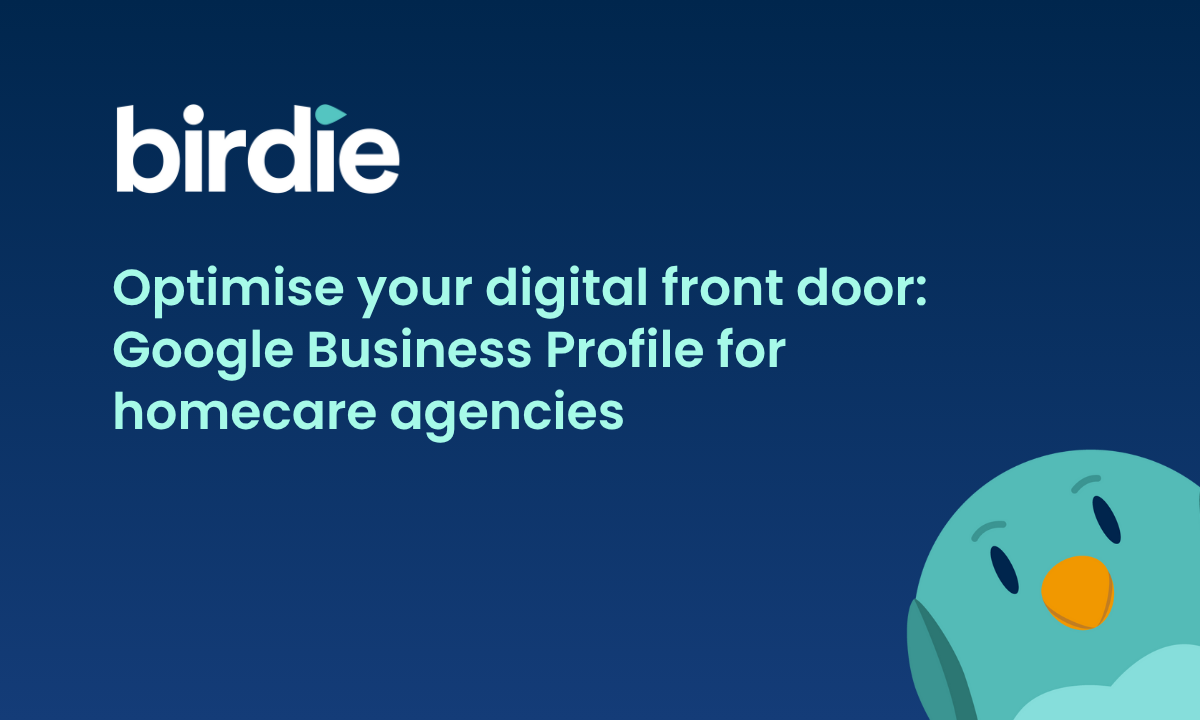Table of contents
It's no secret that the homecare sector is experiencing a technological revolution. Over the past few years, it's gone from being largely pen-and-paper-based to nearly 90% digitised - a remarkable transformation in a short window of time.
So what happens now everyone's moved to digital? Funny you should ask, because new data seems to show that the answer is 'think about changing your digital provider'!
That's right - the independent research reveals that 50% of agencies are actively evaluating new technology right now—they're comparing, deciding, and moving. Far from being content with the first digital partner they picked, it looks like most homecare providers are realising that 'what got you here won't get you there'.
But why the itchy feet? The answer lies in understanding the difference between first-generation care software and smart care technology—and why that can be the difference between surviving and thriving in today's challenging market.
Defining first-generation care technology
First-generation care technology refers to the early wave of digital solutions that moved homecare agencies away from paper-based systems. These platforms were designed to digitise basic processes like scheduling, care planning, and record-keeping - and helpfully, there was some funding to go around to help agencies adopt them.
While these systems represented a significant step forward from paper files and manual processes, they share several common characteristics that limit their effectiveness in today's care environment:
1. Disconnected systems: First-generation platforms often require multiple separate systems for different functions—one for rostering, another for care management, and yet another for finance. This creates data silos and forces staff to enter the same information multiple times.
2. Limited integration: These systems struggle to communicate with each other or with external services like GP systems, creating manual workarounds and increasing the risk of errors.
3. Basic reporting: While they may offer some standard reports, first-generation systems typically lack the sophisticated analytics needed to drive strategic decision-making or identify improvement opportunities.
4. Minimal support: Many first-generation providers offer limited ongoing support, leaving agencies to troubleshoot issues on their own or rely on basic help documentation.
All these things are relatively 'liveable problems' when you've had to deal with pen, paper and filing cabinets for years. But now that the years have rolled by, smart homecare providers have realised that these 'little' problems add up to big issues...
The hidden costs of first-generation care technology
Sticking with first-generation care technology might seem like a cost-saving measure, but it's actually costing agencies in ways that aren't immediately obvious. When systems don't talk to each other, staff spend hours on duplicate data entry instead of focusing on care delivery. Without proper analytics, agencies miss opportunities to optimise their operations and improve profitability. Perhaps most critically, first-generation systems limit an agency's ability to demonstrate quality to regulators and commissioners.
In an environment where 40% of providers reported deficits in 2023 and 39% considered exiting the market due to cost pressures, agencies need every advantage they can get.
Why smart agencies are making the switch
Savvy agencies know that their technology choice is much more than a question of IT —it's about competitive survival. They're the 50% who are looking for better alternatives than the first-generation solutions that got them started, and agencies that stay put risk being left behind.
The data tells a story of what they get out of making their move:
- 20% median growth in care hours after just one year
- 8% average profit margin improvement that compounds annually
- 56% time savings that create sustainable competitive advantage
So, what are these agencies shopping for that'll make such a big difference?
The characteristics of smart care technology
So what does the next era of care technology look like? Unlike first-generation systems that were built as separate tools and later stitched together (we lovingly refer to them as 'frankenplatforms'), smart platforms are built as unified systems from the ground up.
1. Seamless integration: Everything works together—care plans automatically inform scheduling, completed visits flow directly to billing, and performance data connects across all areas of the business.
2. Powerful analytics: Instead of basic reports, modern systems provide insights that help agencies make strategic decisions about growth, quality improvement, and resource allocation.
3. Ongoing partnership: Rather than leaving agencies to figure things out alone, modern providers offer dedicated support, regular training, and community connections.
The end result is being able to work smarter, not just harder!
Don't let the market move without you
With half the sector actively evaluating new technology, the question isn't whether to upgrade—it's whether you can afford to wait. Those who act now position themselves to be among the agencies celebrating growth in 12 months' time.
When evaluating care technology options, look for platforms that demonstrate true integration rather than just claiming it. Ask about their approach to support and community building. Most importantly, consider how the technology will help you not just manage your current operations, but grow and improve over time.
The homecare sector is evolving rapidly, and technology is playing an increasingly central role in determining which agencies thrive. First-generation care technology served its purpose in moving the sector away from paper, but today's challenges require today's solutions.
Don't let outdated technology hold your agency back from the growth and success you're working so hard to achieve—especially when your competitors are already making the move. To learn more about how easy it is to move to Birdie's smart homecare technology, take a look at our switching hub - and when you're ready to explore your options, we'd love to show you what your business's future could look like with Birdie.
Published date:
July 14, 2025
Author:
Hannah Nakano Stewart

















.svg)